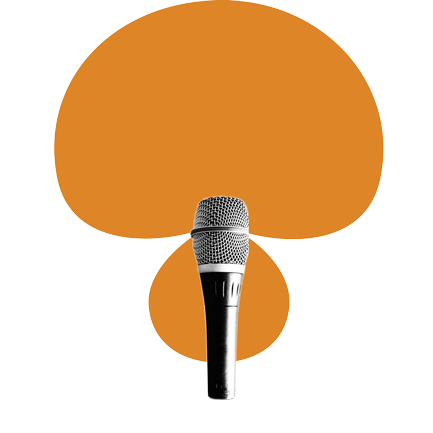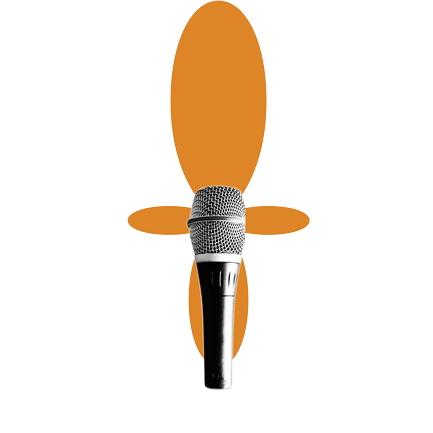The Different Microphone Polar Patterns
A guide to choosing the perfect pick up pattern for your mic
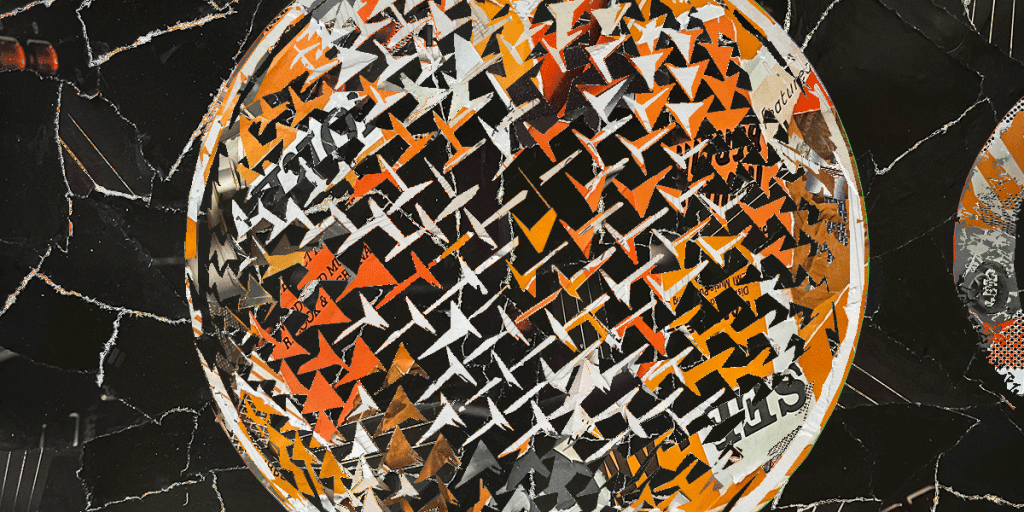
Although most microphones look similar, different polar patterns mean they pick up sound in very different ways.
Some mics pick up sound from the front, some from the sides. And others pick up sound from everywhere, no matter where you place the mic.
Each microphone polar pattern has its pros and cons, depending on what you’re recording, where you’re recording it, and the sound you’re after.
The 6 microphone polar patterns
There’s 6 basic polar patterns to choose from, ranging from the ‘cardioid’ which behaves as you’d expect a mic to, to the bidirectional which might surprise you!
Index of microphone polar patterns:
1) Cardioid
2) Supercardioid
3) Bidirectional (figure of 8)
4) Hypercardioid
5) Lobar (shotgun)
6) Omnidirectional
7) Switchable multi patterns
8) Side address vs front address
Let’s take a look at each microphone polar pattern, starting with the most common type – the cardioid.
Cardioid
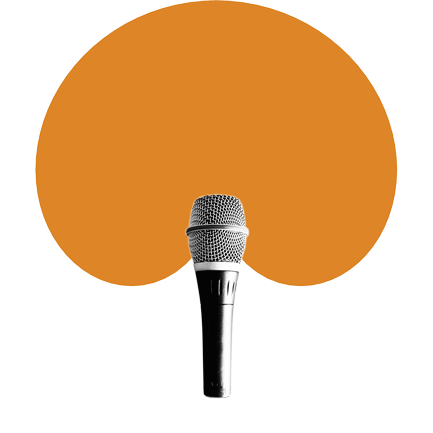
This is the heart shaped polar pattern you’ll find on most microphones. It’s very intuitive – you point the mic towards the sound you want to record.
Most live vocal mics are cardioids, or variations of cardioids (below). This is because a cardioid mic only records what it’s pointing at. It will leave out anything coming from the sides and the back.
For live use, a cardioid mic will minimise sound from the stage monitors and nearby instruments. It’s also pretty good at stopping feedback.
In the recording studio, cardioid mics also have their uses. Because the mic only picks up sound from the front of the mic, it’s less likely to pick up the sound of the room.
And seeing as most home recording studios don’t have the best acoustic treatment, this is where a cardioid polar pattern can come in really handy. Here’s a quick and easy set up for recording vocals and instruments:
Just set up one corner of the room with duvets and blankets. Stand in the corner, in front of those sound absorbing blankets, facing outwards. Place the cardioid mic in front of you, pointing towards you, which will be into the corner.
One of the drawbacks of a cardioid polar pattern is a less open and natural sound when compared to an omnidirectional microphone, which picks up sound from all around.
So if you’re recording in a room with beautiful acoustics, and there’s no distant traffic noise, or interfering sounds, you’d probably want to swap your cardioid for an omni.
Cardioid polar patterns are suitable for:
- Recording whatever you point your mic at
- Noisy environments, fan noise, traffic noise
- Rooms without acoustic treatment
- Isolating from other instruments while recording live
- Reducing feedback from stage monitors during performance
Some examples of cardioid mics:
- Shure SM58 (Amazon, Sweetwater, Thomann)
Possibly the most famous mic of all time, the SM58 is a dynamic mic with a cardioid pattern (full review here).
- Sennheiser E935 (Amazon, Sweetwater, Thomann)
This is a popular cardioid mic for live singers. It has a brighter sound than the SM58 (full review here).
- Rode NT1 (Amazon, Sweetwater, Thomann)
A good value, entry level large diaphragm condenser mic
- Shure KSM9 (Thomann, Sweetwater, Amazon)
A great sounding condenser mic for both studio and live use. It also switches to supercardioid pattern when needed (full review here).
Supercardioid
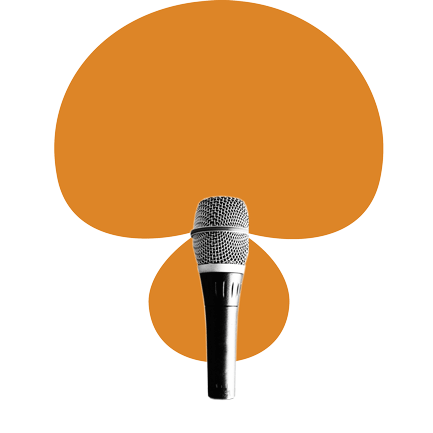
The super-cardioid is a more focused version of the cardioid mic.
The supercardioid polar pattern rejects even more of the sides, leaving a narrower recording area at the front. But watch out – it also picks up a tiny amount from behind the mic.
Use a supercardioid mic in the same situations you’d use a cardioid, and you’ll get even less of the room sound in your recordings.
Because the pick up pattern is quite tight, the sound might be a little less natural and open than a standard cardioid.
A supercardioid mic is a popular choice for live vocals, because it does a great job of isolating whatever’s in front of the mic – even more so than a cardioid. But be careful if you’re more used to a cardioid.
Your sound can suddenly vanish while using a supercardioid if you don’t stay right on the mic. Whereas a cardioid is more forgiving when you move to the side of the mic, or stray from the on-axis position.
On a noisy stage, a supercardioid polar pattern will exclude other performers, and sound from the stage monitors, and virtually eradicate feedback. Watch out for that little lobe at the back of the mic though, and make sure you arrange the stage so you don’t have a sound source directly behind the mic
Supercardioid polar patterns are suitable for:
- Hyper targeting the sound in front of the mic
- Noisy environments, fan noise, traffic noise
- Rooms with poor acoustic treatment
- Pronounced isolation from other instruments while recording live
- Eliminating feedback from stage monitors during performance
Some examples of super-cardioid mics:
- Shure Beta 58A (Amazon, Sweetwater, Thomann)
The upgrade to Shure’s SM58 with an extended frequency range and brighter sound (full review here)
- Sennheiser E945 (Amazon, Sweetwater, Thomann)
A dynamic mic, well suited to stage use (full review here)
- Telefunken M80 (Amazon, Sweetwater, Thomann)
A classic looking retro dynamic mic with a supercardioid polar pattern. Great for vocals and snare drums (full review here)
- Sennheiser E965 (Amazon, Sweetwater, Thomann)
A high quality condenser mic built to withstand live stage use. It also switches to cardioid pattern if needed (full review here).
Bidirectional (figure of 8)
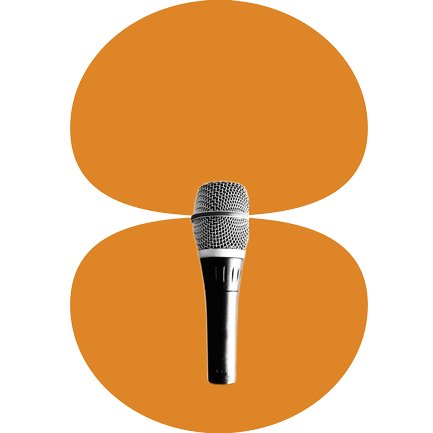
The Figure of 8 polar pattern is also called bidirectional, as it picks up sound from two directions.
It will record sound equally from the front and back of the microphone, and reject sound from the sides.
This is the classic polar pattern for recording 2 singers – one behind the mic, and one in front. Both singers can then face each other to keep in perfect sync.
The bidirectional polar pattern works well for recording a vocalist who plays their own guitar. One end of the mic points towards the singer’s mouth area, the other end towards the guitar.
Figure of 8 is the natural and standard polar pattern for traditional ribbon mics. If you do want to invest in a ribbon mic, bear in mind they have low output signals, and it’s often a good idea to find a matched amplifier to go with it.
Figure 8 mics can be used for some pretty advanced stereo techniques too, such as mid/side and Blumlein.
They’re also natural choices for many radio presenters because they respond so well to the proximity effect. That is, the closer you speak into the mic, the more the bass is boosted. It’s how male presenters get that really deep and rich, ‘larger than life’ sound.
You don’t see as many bidirectional mics as some of the other polar patterns. But many large diaphragm condenser mics, which have switchable polar patterns (more here), also include the figure of 8 option.
Bidirectional polar patterns are suitable for:
- 2 backing singers, face to face
- Recording a vocalist with their own acoustic guitar
- Combining with other mics for stereo recording
- Boosting the bass in close proximity
Some examples of figure 8/bidirectional mics:
- Royer Labs R-121 ribbon mic (Sweetwater, Thomann)
A classy modern designed ribbon mic with a lot of uses in the studio. Used for recording brass, wind instruments and string instruments, as well as vocals and guitar. It’s often paired with a Shure SM57 (review here) for recording electric guitars.
- Coles 4038 ribbon mic (Thomann)
A classic ribbon mic with a long history and pedigree at the BBC. It has a distinctive dark sound, great for warming up brass instruments, guitars and drums.
- AKG C411 condenser mic (Thomann)
This is a tiny contact mic with a bidirectional polar pattern. You can fix it to a guitar or violin for amplifying on stage
Hypercardioid
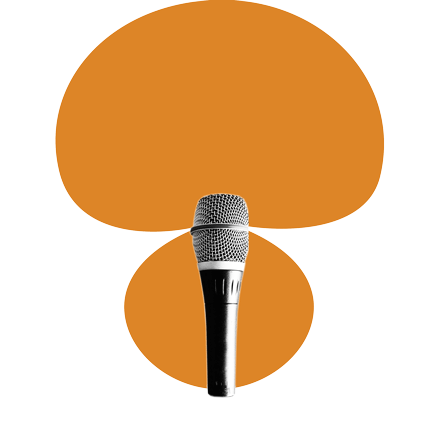
The hyper-cardioid lies somewhere in between the cardioid and the figure of 8 polar patterns.
It’s an extremely directional polar pattern, picking up sound from the front, but also partly from the back. Sound is effectively rejected from both sides.
The hypercardioid isn’t the ideal polar pattern for use on stage because of that rear lobe, which could pick up sound from stage monitors, or other performers. But if you’re using one in the studio, you could position some sound absorption behind the mic to effectively reduce sound getting in.
It’s not the first choice for singers either, as it’s quite sensitive to picking up plosives – those little bursts of air from the voice which can ruin a recording.
You’d use a hypercardioid polar pattern where you need extreme isolation. An engineer will use it to hone in on a particular sound source, or in a creative placement, such as inside a drum kit.
Hypercardioid polar patterns are good for:
- Extreme isolation from other instruments while recording live
- Exact targeting of sound sources
- Very effective rejection of unwanted noise from the sides
- Placed on a boom for location and TV recording
- Placed on a camera or DSLR to pick up sound from the subject as well as the camera operator’s voice
Some examples of hypercardioid mics:
- Neumann KM185 condenser mic (Sweetwater, Thomann)
A very accurate and transparent small diaphragm condenser mic, used for recording a wide range of acoustic instruments, such as piano, acoustic guitar, drums and orchestral.
- Audix D4 dynamic mic (Sweetwater, Thomann)
A specialised mic, just for floor toms and kick drums.
- Audio-Technica AT4053B condenser (Sweetwater, Thomann)
A high quality small diaphragm condenser mic, which sounds great with spoken word and indoor film dialogue.
Lobar (shotgun)
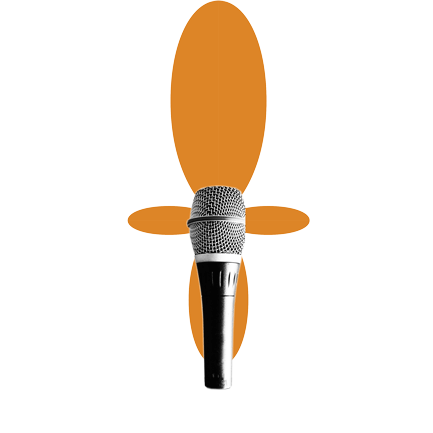
Lobar is the polar pattern for shotgun microphones. The lobar microphone can pinpoint a sound source with laser like clarity.
It’s a great polar pattern for recording from a distance too.
Technically, the lobar is similar in construction to a hyper-cardioid mic, but with the addition of an interference tube, to really narrow down the focus to a pinpoint.
Lobar mics, or shotgun mics are used extensively in film studios. They can be kept just out of shot, attached to a handheld boom pole. Boom operators get really skilled at keeping the mic pointing directly at the actor as they move around.
With a highly directional pattern, you have to make sure to point the mic exactly at the sound source. If it’s just slightly off axis, the sound quality can be noticeably quieter and of poorer quality.
Lobar/shotgun mics can also be used on top of cameras and DSLRS, to pick up dialogue from the talent. This is the type of polar pattern to use to get great sound on your YouTube videos.
Most lobar or shotguns are condenser mics, so they’ll need power – either from an internal battery, or from external phantom power.
The lobar polar patterns are suitable for:
- Recording in a noisy, crowded environment
- Recording dialogue for film and TV
- Mounted on a camera or DSLR for self-filming
Some examples of shotgun mics:
- Rode NTG2 (Amazon, Sweetwater, Thomann)
Use this short shotgun mic with your DSLR camera for a huge improvement on the camera’s internal microphone.
- Rode NTG3 condenser mic (Amazon, Sweetwater, Thomann)
If you have the budget, stretch to one of these for your camera for superb full range sound. It’s also great for film work, overdubs and foley.
- Rode VideoMic NTG condenser mic (Amazon, Sweetwater, Thomann)
This is a mini shotgun in its own cradle. It’s the perfect size for a DSLR, and mounts in the camera’s cold shoe attachment. A great option if you need a compact filming setup with good sound.
- Sennheiser MKH 416 (Thomann, Sweetwater, Amazon)
A premium shotgun microphone which you can use in a variety of situations. It delivers top quality sound, and is also very effective as a voiceover mic.
Omnidirectional

An omnidirectional polar pattern receives sound from all directions. It doesn’t matter where you point the microphone.
This means you can put the mic in the centre of a room and it will record everything.
These types of microphones are great for producing an open, natural sound.
But watch out – an omnidirectional polar pattern will also pick up the full acoustics of the room. This is perfect if you’re recording in an old chapel, or a beautifully treated studio, like Abby Road.
But if you’re operating out of a box room studio, best not to use an omni. Unless of course you’re looking for a boxy sound!
It’s the same for live and stage use. An ‘omni’ mic will pick up all of the surrounding instruments, the stage monitors, even the audience. And it will be prone to feedback.
The omnidirectional polar pattern is used in a broad range of microphone types, for many different uses. Clip-on lavaliers, mics for PCs and laptops, reporting, podcasts, field and ambient recordings.
Omnidirectional polar patterns are good for:
- Acoustically treated environments
- Acoustically beautiful environments
- An open, natural sound
- Outdoor field recording
Some examples of omnidirectional mics:
- Sennheiser MD42 (Sweetwater, Thomann)
A dynamic mic with high quality sound, used mainly for reporting in radio and TV. It’s well suited to outdoor use, handling wind noise well.
- Audio-Technica AT 4022 (Sweetwater, Thomann)
A high quality studio mic for recording instruments with natural and clear sound. Sounds fantastic on an acoustic guitar.
- Blue Yeti USB mic (Sweetwater, Amazon)
A very popular omni mic for using with a PC. Great for voiceovers, gaming and recording podcasts.
- Rode Lavalier Go (Amazon, Sweetwater, Thomann)
A popular budget clip-on mic with a miniature condenser capsule. Keep one of these around to use with your DSLR camera or notebook. You can also turn it into a wireless system.
Multi pattern microphones
Some microphones have several polar patterns, which you can easily switch between. This is an incredibly useful feature – you can instantly change the polar pattern to suit the instrument, vocalist or recording environment.
These mics tend to be high end, large diaphragm condensers, so they’re not cheap. But they’re a great addition to a home recording studio, as you could get away with just one top quality mic for recording everything.
Side address vs front address mics
The examples below all pick up sound from the sides, rather than the top of the mic. They’re called ‘side address’ mics, rather than ‘front address’. You can easily spot them – they’re chunkier, with a vertical bar dividing the grille.
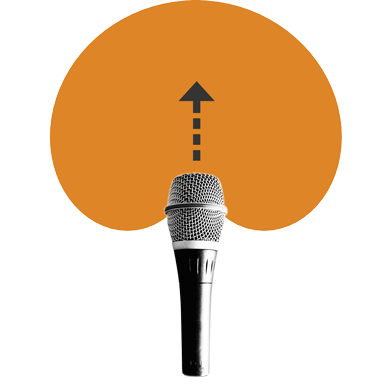
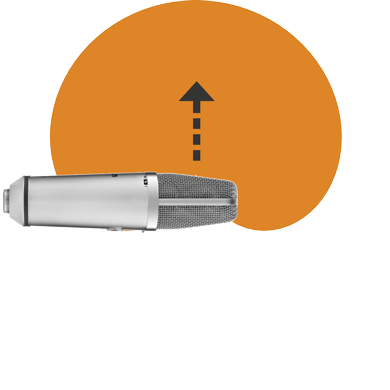
Some examples of multi polar pattern condenser mics:
An entry level multi pattern mic made in China, under AKG. Great for podcasts and recording spoken word.
- Rode NT2-A (Amazon, Sweetwater, Thomann)
A good quality large diaphragm condenser which switches between omnidirectional, figure of eight and cardioid.
- AKG C414 XLII (Amazon, Sweetwater, Thomann)
An incredibly versatile mic – not only does it sound fantastic on just about anything, you can switch the polar patterns between omnidirectional, wide cardioid, cardioid, hypercardioid, and figure of eight. (Full review here)
- Neumann U87 AI (Sweetwater, Thomann)
A super high-end multi pattern condenser microphone used for recording warm vocals, piano, and a range of other instruments. Switches between omnidirectional, cardioid and figure-8. (Full review here)
Conclusion
Now you’ve figured out which polar pattern you’ll need, you’ll need to decide what type of mic to get – a dynamic, condenser, or ribbon. Stuck?
Take a look at this article on the different types of microphones.
Education is the key to getting a pro sound. I’ve made a guide to help you choose the Best Online Music Production Courses available right now
Microphone polar patterns FAQ
What’s the best polar pattern for vocals?
The best polar pattern for vocals is cardioid, as it picks up sound from the front of the mic while reducing ambient noise from the back and sides. In a good sounding, or acoustically treated recording environment, you can use an omnidirectional polar pattern, which will have a more open and natural sound
What’s the most common microphone polar pattern?
The most popular polar pattern for a microphone is cardioid. It behaves as you’d expect a mic to behave, picking up sound from in front of the mic

